Chinese Aircraft Manufacturing Takes Off
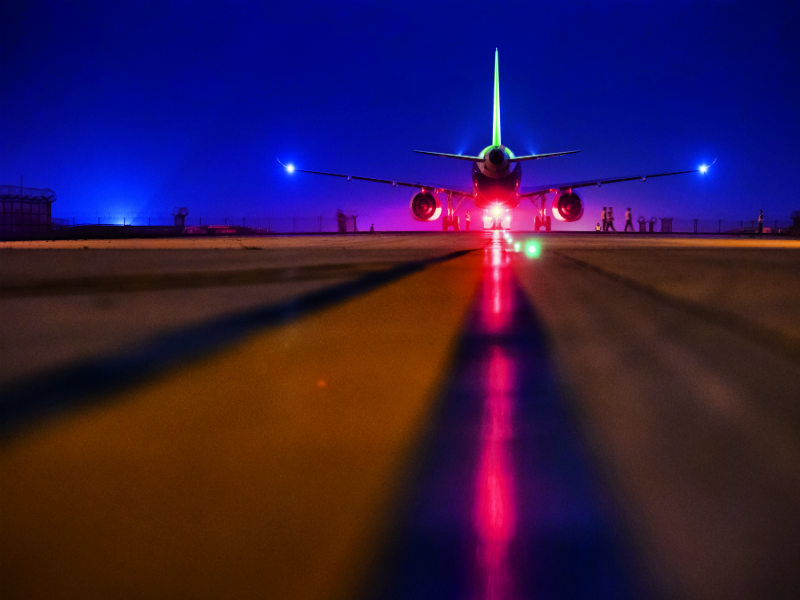
On May 5, 2017, China’s homegrown large passenger plane, the C919, took off into the sky in Shanghai, with thousands of spectators gathering to witness the historic moment. Departing from Shanghai Pudong International Airport at around 2 p.m., the C919’s maiden flight, with five crew members on board but no passengers, lasted about 79 minutes, reaching an altitude of 3,000 meters. The plane’s successful debut makes China the fourth jumbo jet producer in the world after the United States, Europe, and Russia. Not only has China joined the global aviation market as a strong competitor, but the country’s manufacturing and innovation sectors have been reinforced as well.
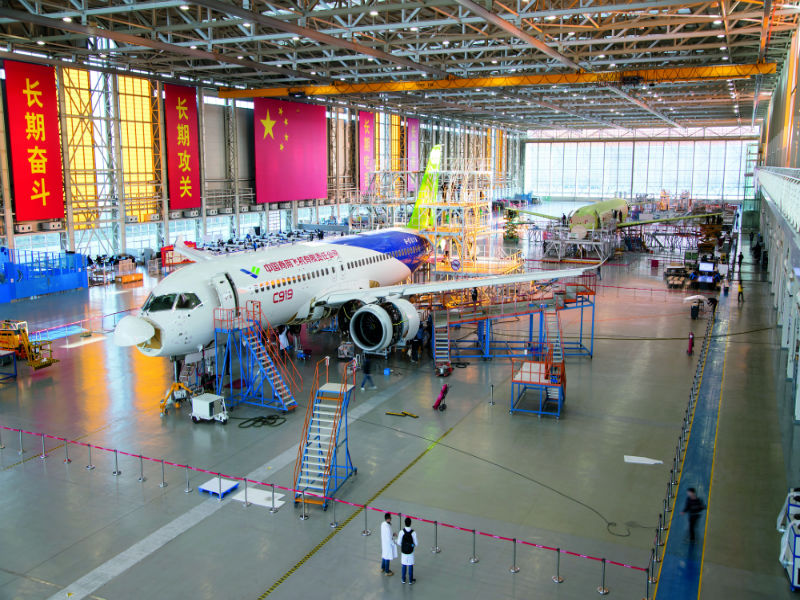
February 15, 2017: The C919 undergoes checks in the final assembly workshop. The C919 passed a series of strict tests before it rolled off the assembly line in November 2015. by Wan Quan
Chinese Aviation
Manufactured by Shanghai-based Commercial Aircraft Corporation of China, Ltd. (COMAC), the twin-engine single-aisle C919 will be used for medium-haul flights in the commercial market, a process which may take two to three years.
The Chinese government has been placing great importance on establishing independence and self-sufficiency in all aspects of aviation. In 2007, the C919 project, a plan to develop a domestically-built large passenger jet, was launched. One year later, COMAC was established in Shanghai due to the city’s technological advantages in the aviation industry. In November 2015, the first C919 jet rolled off the assembly line. The letter “C” in the aircraft’s name stands for both China and COMAC, while 9 symbolizes “forever” in Chinese culture, and 19 represents its 190-seat capacity.
After World War II, the global aviation industry gradually shifted from military to civil aviation. In the early 1970s, China launched a development plan for the Y-10, a four-engine narrow-body aircraft, to testify to advances in Chinese industry and obtain experience in large aircraft design and flight testing. Despite the successful trial flight of the Y-10 in September 1980, the program was cancelled only a few years later. According to Cheng Bushi, deputy chief designer of the Y-10, failure to meet airworthiness standards and a lack of test pilots were the major reasons the aircraft was never certified after several test flights. The failure of the Y-10 program alerted Chinese aviation authorities to the importance of airworthiness, and a standards division was eventually established in 1987.
In 2014, the ARJ21-700, China’s first domestically-produced regional jet model, was officially certified, using the country’s airworthiness standards. The ARJ21 is short for Advanced Regional Jet for the 21st Century. The first ARJ21-700 was designed between 2003 and 2007 and made its first test flight in November 2008. The jet completed more than 5,000 hours of test flights before it was officially certified at the end of 2014.
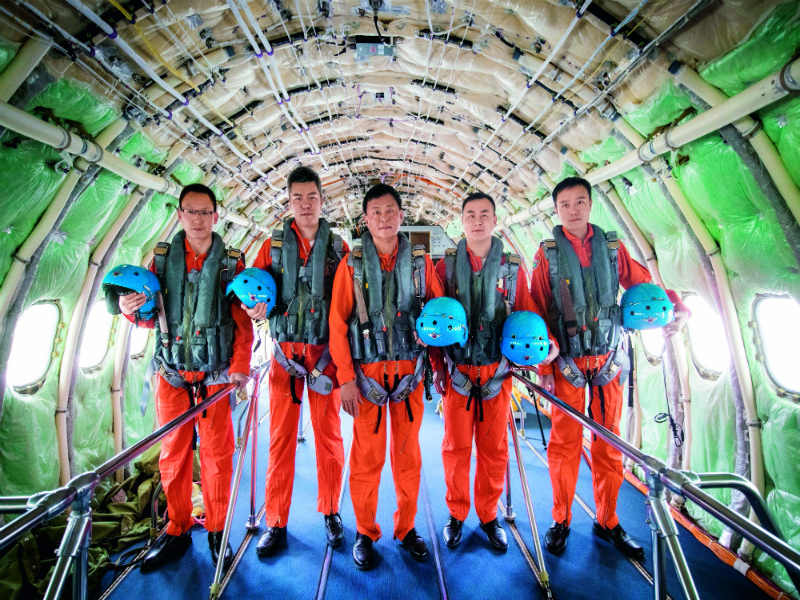
The ARJ21 has 78 seats in a dual-class configuration and 90 in a full economy configuration. Its operational life is designed to exceed 60,000 flying hours or 20 calendar years. The ARJ21 is considered the maiden project of China’s passenger aircraft manufacturing efforts. Even during the development process of the ARJ21, all stakeholders including the authorities, manufacturers and suppliers were already looking towards the C919.
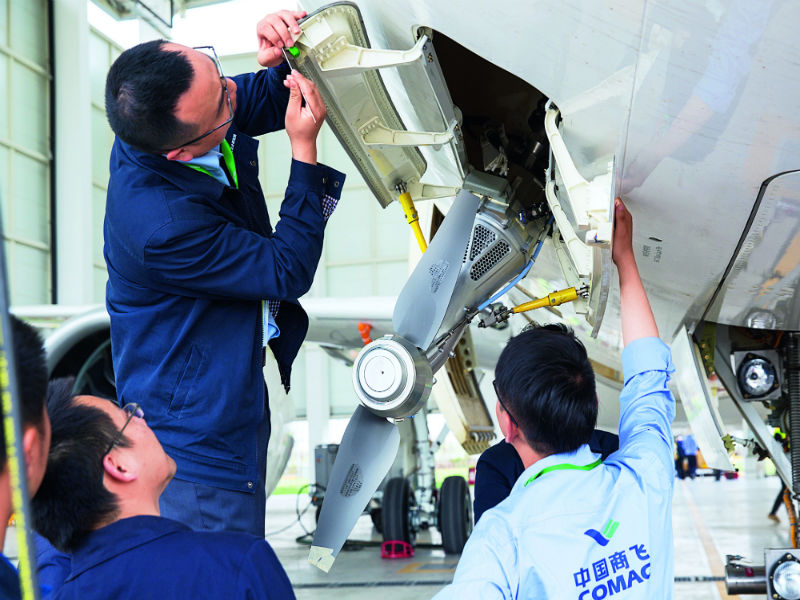
April 20, 2017: Engineers perform adjustments on the C919 before it carries out its high-speed taxiing test in Shanghai. by Wan Quan
Eyeing the International Market
According to designers of the C919, more than 50 percent of its parts and components were domestically made, either by Chinese companies or joint ventures in China. Since launching the C919 project, the plane’s research team has made 102 technological breakthroughs in fields such as integrated design of engines and systems control. The C919, with a standard range of 4,075 kilometers, is worthy competition for the newest Airbus 320 and Boeing 737.
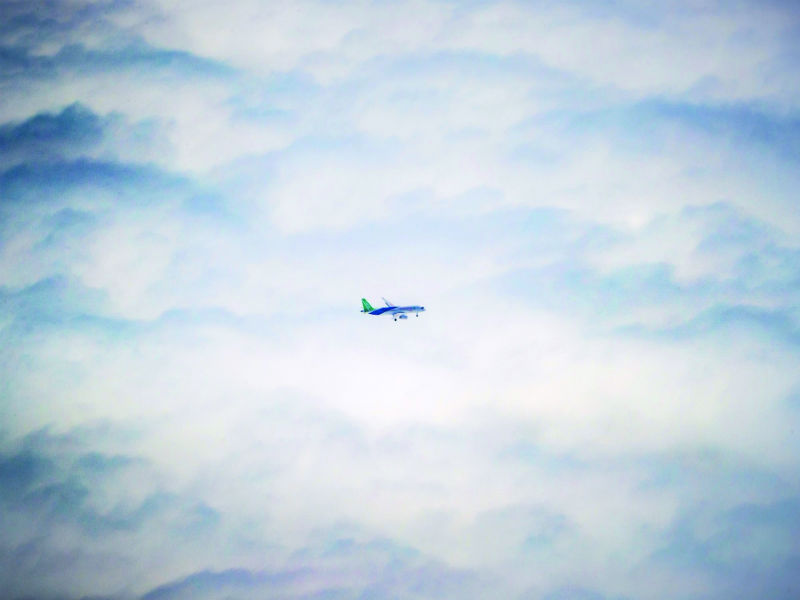
May 5, 2017: The C919 flies high in the clouds. Looking at the overall design of the C919, from its initial design to calculations, testing, and construction, the airframe was independently developed in China. by Wan Quan
Many industry insiders were impressed by the C919. “We believe the C919 will bring new competition to the market, and we welcome competition to drive development of the industry,” said Eric Chen, president of Airbus Commercial Aircraft China. Kevin McAllister, president and CEO of Boeing Commercial Airplanes, expressed congratulations from Boeing after the C919’s successful debut flight. “This is a great achievement in COMAC history and an important milestone for Chinese aviation,” he added.
COMAC has already received more than 570 orders for the C919 from 23 foreign and domestic customers including China’s national carrier, Air China, and leasing company GE Capital Aviation Service. With an increasing volume of Chinese people traveling for leisure and business, China’s aviation market has been growing rapidly. In 2016, Boeing predicted that China would become the world’s top aviation market within 20 years, projecting demand for 6,810 new aircraft in the coming 20 years, worth a total of US$1 trillion.
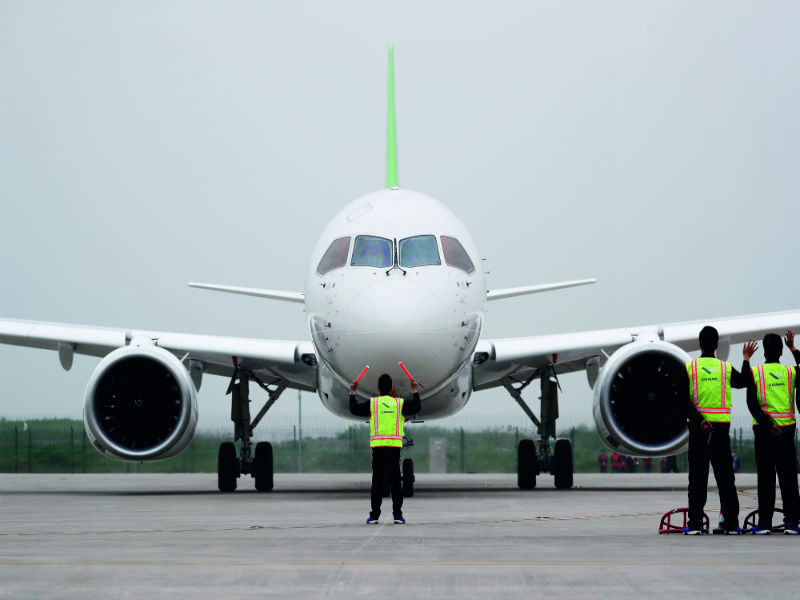
May 5, 2017: The C919 makes a safe landing in Shanghai. The successful maiden flight of the C919 generated a great source of pride for China. by Xu Xun
Michel Merluzeau, director of Air Insight Research, a Seattle-based aerospace market analysis and consulting group, predicted in an interview that by the mid-2030s, COMAC will become an important link in global aerospace supply chains.
However, denting the dominance of Boeing and Airbus in the near future would be unrealistic. Western certification is already a major challenge facing the Chinese passenger jet. Being awarded European Aviation Safety Agency (EASA) and Federal Aviation Administration (FAA) certification would represent a huge victory for the program due to the meticulous requirements. “If that happens, the market for the C919 will be greatly expanded,” said Merluzeau.
Aviation analysts expect the C919 to become a strong option for global carriers in the decades to come. They recommend COMAC seek to learn from and cooperate with Boeing and Airbus, the world’s most mature aircraft manufacturers.
“The global market is so complex and competitive that it is impossible to make a big splash immediately with a product that instantly ends the competition,” explains Vasily Kashin, a senior research fellow at the Center for Comprehensive European and International Studies of the Moscow-based Higher School of Economics.